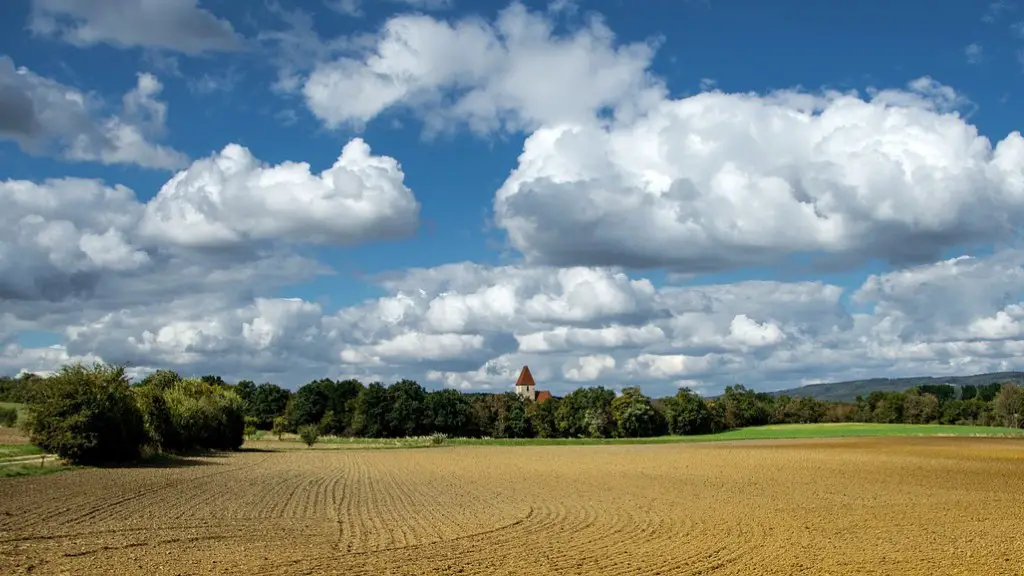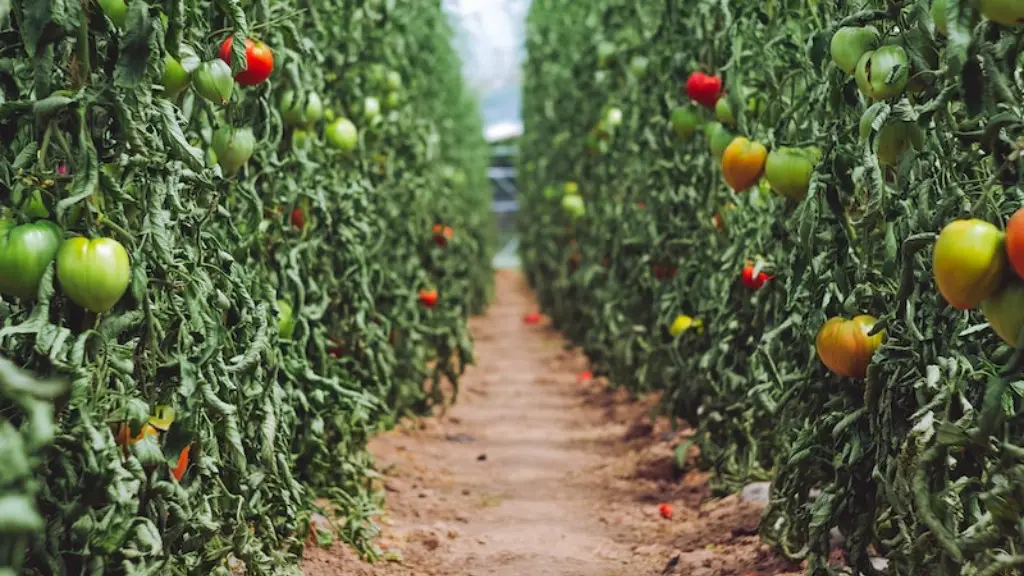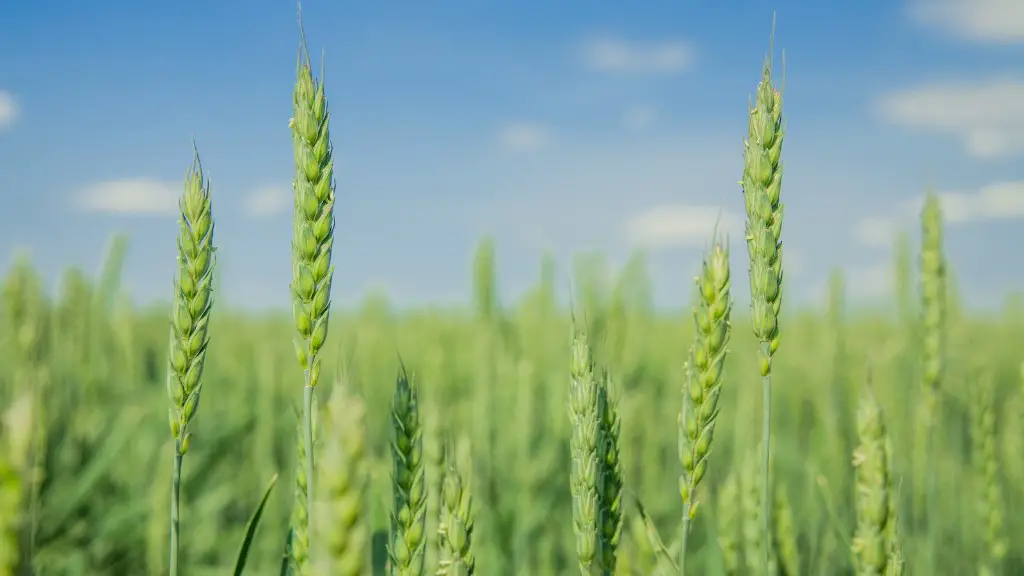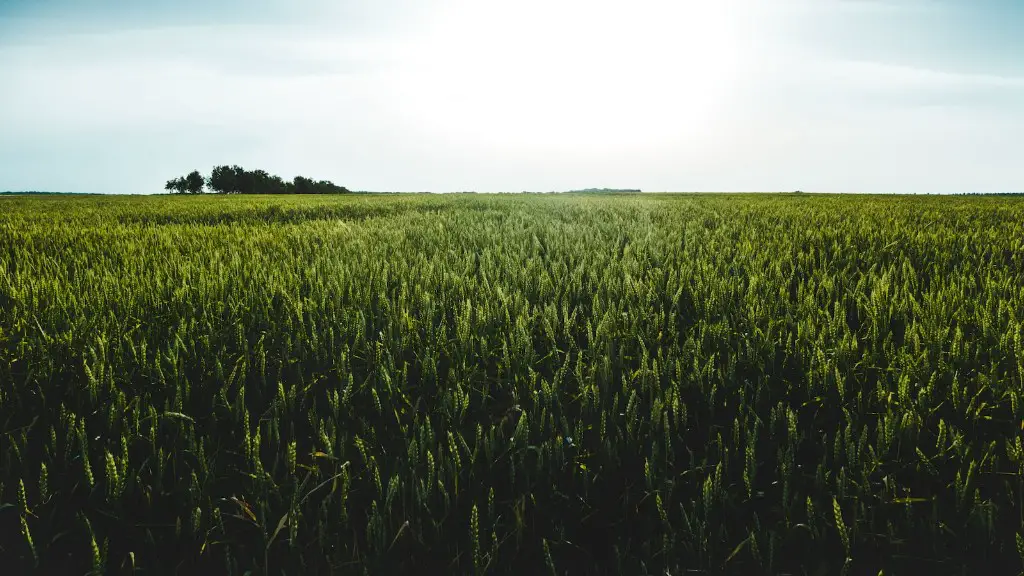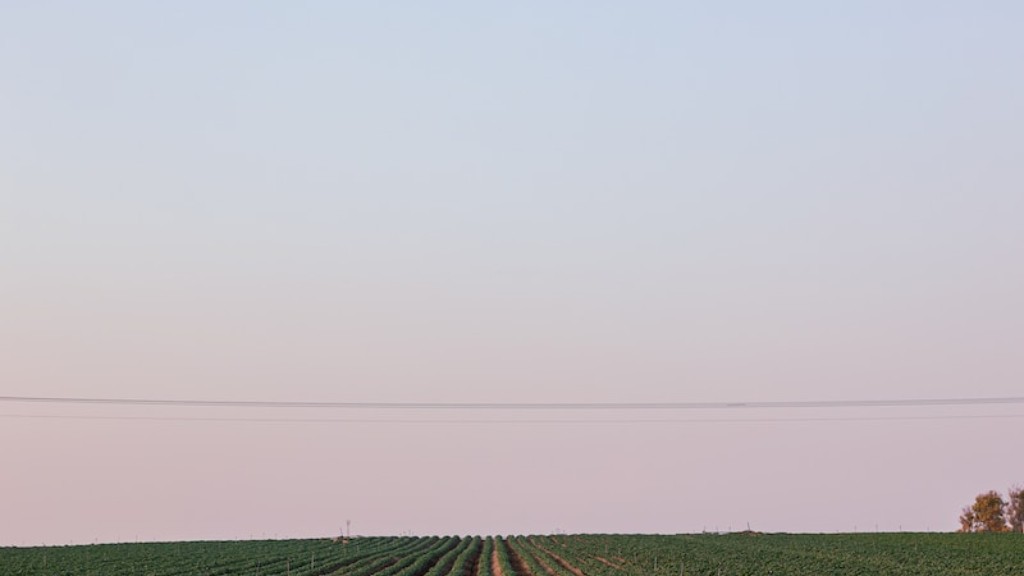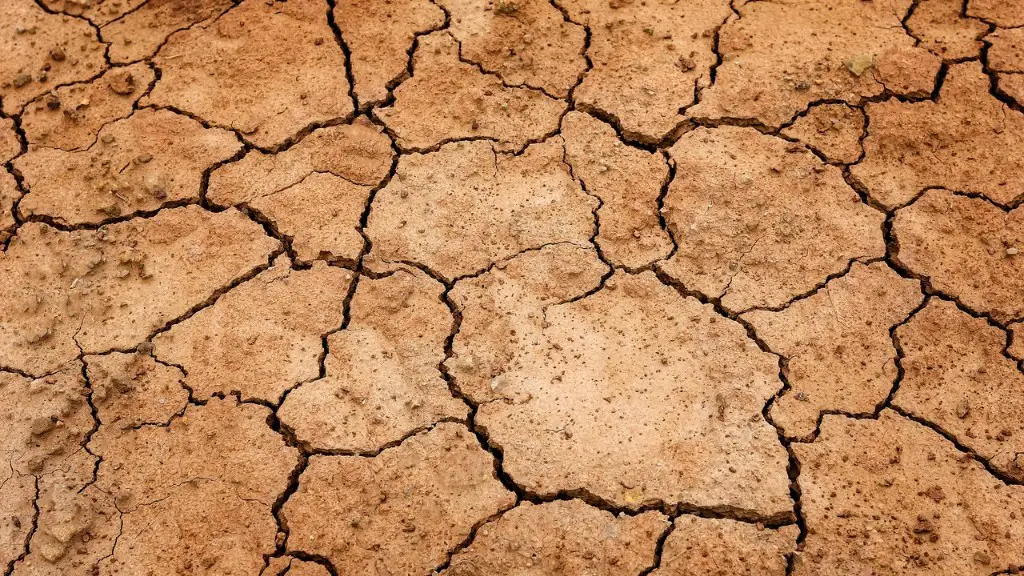Agriculture is an essential source of livelihood for people around the world, providing food, fibre and other products through the cultivation of crops and livestock. Recent research estimates that around 40% of the planet’s land area is used for agricultural production, including grazing land, cropland and woodland. This article explores how much of the world’s land is used for agriculture in 2020 and what other activities are taking place on the land in question.
In 2020, around 11.8% of the land on Earth was used for crop production. This number has grown significantly over the last few decades, as the global population has increased and more land has been needed to feed everyone. However, this doesn’t tell the whole story. When pastureland (land used for grazing livestock) is included, the total land used globally for agricultural production rises to around 40%.
In the future, this number is expected to increase as demand for food and other agricultural products increases. This could lead to further deforestation, displacement of people and destruction of habitats in certain areas. It is also important to remember that land used for agriculture is often being used for other activities too. For example, in some countries, forests are being cleared to make room for other activities such as urban development, or to create new roads and infrastructure.
Analysing how much of Earth’s land is used for agriculture in 2020 is a complex task. It involves taking into account many factors, including population growth, global demand for food, technological advances in crop production and even changes in land use legislation. While it is not possible to know exactly how much land is used for agriculture, experts believe that the current figure is somewhere around 40%.
It is important to note that the amount of land used for agricultural production is not the same every year. For example, in 2018 there was an unusually high demand for food due to weather patterns, which caused the land used for agriculture to increase. This is just one example of how the land used for agriculture can fluctuate from year to year, depending on various factors.
Different Agricultural Practices
Agricultural practices vary significantly between countries, depending on soil type, climate and local culture. In some parts of the world, monoculture (the practice of growing one crop over a large area) is used, which means that large amounts of land are used for growing a single crop. In other areas, crop rotation (the practice of growing different crops in succession) is used instead, which uses the same amount of land but is less environmentally destructive.
The type of land used for agricultural production also varies. For example, some countries rely primarily on forest and woodland to produce their food, while other countries rely on cropland or pastureland. In some areas, agricultural production is supplemented by aquaculture (the farming of aquatic animals and/or plants in tanks or tanks with controlled conditions) and other forms of farming.
In addition, there are a variety of ways in which agricultural land is managed. For example, some countries have policies in place that discourage or prohibit the use of certain chemicals, while other countries do not regulate the use of chemicals in agriculture. Similarly, some countries practise sustainable agriculture or organic farming, using traditional methods to produce food, while other countries rely heavily on chemical fertilizers and pesticides.
It is clear that the way in which land is used for agriculture varies significantly from country to country, and depends on a range of factors. As the global population continues to grow and demand for food increases, it is likely that the amount of land used for agricultural production will continue to increase. Therefore, it is important for people to understand the different agricultural practices, and the implications for the environment, before making decisions about how best to use land for food production.
Effects of Agricultural Practices
Agricultural practices can have both positive and negative impacts on the environment. For example, using chemical fertilizers and pesticides can result in water and air pollution, and can damage soil health over time. In some cases, deforestation results in soil erosion, which in turn can lead to decreased levels of fertility and eventually barren land. Furthermore, land degradation due to excessive agricultural practices is a major problem in some parts of the world, leading to degraded soils and loss of biodiversity.
On the other hand, some agricultural practices can have positive effects on the environment. For example, sustainable agricultural practices such as crop rotation and the use of organic fertilizers can improve soil fertility, provide better habitat for pollinators and beneficial insects, and help protect water quality. They can also help to prevent the loss of biodiversity, and can contribute to the overall health of the land.
Overall, it is important to consider the potential impacts of agricultural practices on the environment before making decisions about how best to use land for food production. We must strive to strike a balance between satisfying the increasing global demand for food and maintaining the health of our environment.
Trends in Global Agriculture
The global trend towards industrial agriculture has had a major impact on land use worldwide. This type of agriculture relies on chemical inputs such as fertilizers and pesticides to maximize crop output, and involves large-scale operations using specialized equipment. The result is that more land is needed to meet the food demands of a growing population. However, it is important to remember that this type of agriculture often has environmental ramifications such as air and water pollution, soil erosion and loss of biodiversity.
In recent years, there has been an increased focus on organic agriculture and sustainable agricultural practices. In these systems, farmers use traditional methods to produce food and avoid the use of chemical inputs. This type of agriculture has been proven to be more sustainable and can often result in better crop yields, as well as higher returns for farmers.
In addition, agroforestry (the practice of integrating trees into agricultural systems) is becoming increasingly popular. This type of system has been proven to be beneficial for the environment, and can provide a number of benefits such as improved soil health, increased crop productivity, and better habitat for a variety of wildlife species.
Finally, there is a growing trend towards digital agriculture (the use of technology and data to improve crop yield). This type of agriculture involves the use of sensors, cameras and digital maps to monitor and manage field operations, as well as the use of artificial intelligence to improve decision making. While this type of agriculture is still in its early stages, it promises to bring about major changes in the way land is used for agricultural production in the near future.
Impacts of Land Use on Climate Change
The way in which land is used for agricultural production can have a significant impact on the environment and climate change. For example, deforestation and other land-use changes can result in the loss of carbon from stored vegetation, resulting in increased levels of greenhouse gases in the atmosphere. This, in turn, can contribute to global warming and climate change.
In addition, agriculture is a major source of pollution, in the form of nitrogen, phosphorus and other chemicals, which can lead to water pollution, air pollution, and increased levels of greenhouse gases in the atmosphere. These pollutants can have a significant impact on local ecosystems, and can also contribute to global climate change.
Furthermore, industrial agriculture is a major contributor to global water shortages, due to water usage for crop irrigation and animal production. In many developing countries, water is becoming increasingly scarce due to rising global demand. This lack of water can lead to decreased food production, loss of habitats and species, and increased pressure on local people.
Finally, industrial agricultural practices can lead to soil erosion, which can contribute to global warming. Soil erosion results in less soil available for crop production, which means that more land needs to be cleared for agricultural production. This can lead to further deforestation, exacerbating the effects of climate change.
Mitigating the Effects of Land Use
The effects of land use on climate change and the environment can be mitigated by making use of sustainable and organic agricultural practices, such as crop rotation and the use of organic fertilizers. These practices help to reduce pollution and the depletion of natural resources, while also helping to protect important habitats, species and ecosystems.
In addition, it is important to encourage the adoption of agroforestry and other forms of integrated agriculture. These systems can provide numerous benefits, including improved water and air quality, enhanced crop productivity, better habitat for wildlife and soil conservation. Furthermore, agroforestry practices can help to sequester carbon from the atmosphere and reduce the impact of climate change.
Finally, it is important to promote digital agriculture and other forms of technology. These technologies can be used to monitor and manage field operations, reducing the need for chemical inputs and increasing crop yields. They can also be used to reduce water usage, improving water availability for other uses.
Overall, it is clear that there are a number of ways to mitigate the negative effects of land used for agricultural production. By actively encouraging and supporting sustainable and organic agricultural practices, agroforestry systems, and digital agriculture, we can ensure that our land is used in a way that is beneficial to both people and the environment.
